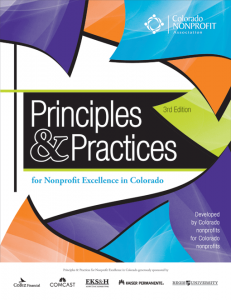This is the first post in a series about Colorado nonprofit corporate governance issues. Check back in coming weeks for posts on other topics including email voting, parliamentary rules, recommended corporate policies, and distinctions between articles of incorporation and corporate bylaws.
In Colorado, both voting members and directors of nonprofit corporations have the option of casting a vote by proxy—meaning that the individual does not have to be present and participatory to vote. However, there are some key differences that bear discussion:
Default Rule. For voting members, proxy voting is allowed by statute unless it is otherwise prohibited under an organization’s bylaws—meaning that the allowance of such voting is a default rule. However, the situation is reversed for director voting, and the bylaws must expressly authorize proxy voting for it to be permissible—meaning that no proxy voting is the default. Organizations should be sure that their bylaws conform with the proxy voting practice they’d like to conduct.
Directed Proxy. Voting members are able to appoint a proxy without directing that proxy on how specifically to vote. However, directors must give a directed proxy to another director, meaning that director is only able to cast the vote specifically directed.
Pros and Cons of Proxies. Proxies can be desirable, because they provide some flexibility for members or directors who otherwise may be unable to participate in a vote. This can allow votes to proceed that otherwise may not be able to due to lack of a quorum. However, some recommend against them for this very reason—they allow an individual to vote without being present and participating in discussion. This is arguably why the default rule for directors is to not allow proxy voting unless the bylaws say otherwise—because directors have fiduciary duties to the organization, and it may warrant more thought and discussion for an organization to allow voting in a way that doesn’t maximize participation and involvement of each director.
Other flexible voting options. In addition to proxy voting, there are other mechanisms under Colorado law that allow for flexible voting. Both voting members and directors can vote using a written action in lieu of meeting (which will be the topic of a future post in this series), and member can also vote by written ballot. Also, both voting members and directors can participate and vote in meetings using any technology by which participants can hear one another—such as conference calls and web conferencing.
Example. Below is an example of a Director Proxy:
Director Proxy
I, John Jones, a member of the board of directors of XYZ Nonprofit (“Nonprofit”), a Colorado nonprofit corporation, hereby authorize and direct Sally Smith, chair of the board, who will be present at a meeting of the board of directors to be held on February 1, 2015, to cast my vote at such meeting in favor of extending an offer for Betsy Brown to serve as Nonprofit’s new executive director.
____________________
John Jones
__________________
Date


